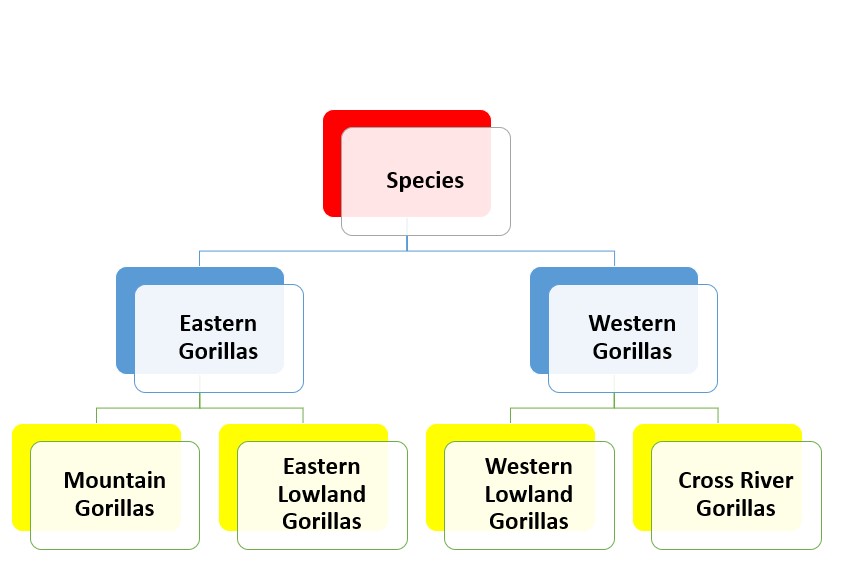
Gorillas, the gentle giants of the animal kingdom, have us captivated with their strength and intelligence.
But where do they live? Let’s explore these fascinating creatures’ natural habitats and learn about the different species that call these places home.
Key Takeaways
- Gorillas primarily live in the forests of central Africa, specifically in the countries of Rwanda, Uganda, and the Democratic Republic of Congo.
- There are two species of gorillas: the eastern gorilla and the western gorilla. Each species has two subspecies.
- Gorillas are highly social animals and live in groups called troops or bands. These groups are led by a dominant silverback male.
- The habitat of gorillas is threatened by deforestation, poaching, and human encroachment. Conservation efforts are crucial to protect their populations.
- Gorillas are herbivores and their diet consists mainly of leaves, stems, fruits, and bamboo shoots.
- Gorillas are known for their strength and can weigh up to 400 pounds. They are primarily terrestrial but can climb trees if necessary.
- Gorillas are an endangered species, with their populations declining due to various factors. Efforts are being made to protect their habitats and promote conservation awareness.
Gorilla Species and Distribution

Gorillas mainly live in central Africa’s rainforests and dense jungles. You’ll find them in countries such as Uganda, Rwanda and the Democratic Republic of Congo. These regions give them plenty of food and shelter.
There are two main species: eastern (Gorilla beringei) and western (Gorilla gorilla). The eastern is further divided into mountain and eastern lowland gorillas. Western gorillas are split into western lowland and Cross River gorillas.
Gorillas are great apes found in forests and mountains of Africa. Two species: Eastern Gorilla (Gorilla beringei) and Western Gorilla (Gorilla gorilla), each with subspecies.
Here’s a table with the species, subspecies, and distribution:
| Species | Subspecies | Distribution |
| Eastern Gorillas | Mountain Gorillas | Virunga Mountains – Rwanda, Uganda, DRC |
| Eastern Gorillas | Eastern Lowland Gorillas | Dense, wet forests – eastern DRC |
| Western Gorillas | Western Lowland Gorillas | Central African Republic, Cameroon, Congo Basin |
| Western Gorillas | Cross River Gorillas | Nigeria and Cameroon |
Both species face threats: habitat loss, poaching for bushmeat, disease outbreaks like Ebola. Conservation efforts are in place to protect these gorillas, such as research, anti-poaching, habitat restoration, eco-tourism initiatives, and the WWF.
An example is the story of Harambe, a captive-born male gorilla. In 2016, a child fell into his enclosure at the Cincinnati Zoo.
Zookeepers had to shoot Harambe to protect the child. This sparked debates on animal welfare and human responsibility.
We need collective efforts to protect gorilla habitats and secure their survival. Research, conservation, responsible tourism, we can make sure these magnificent creatures thrive in the wild.
Gorilla Habitats

Equatorial Africa has other gorilla populations. The Cross River gorilla, an endangered subspecies, is near the Nigeria-Cameroon border. These areas give gorillas a home to thrive.
Gorillas live in many places around Africa. Here are six facts:
- Gorillas live mainly in Central Africa’s tropical forests.
- The Eastern and Western gorillas live in different areas.
- Mountain gorillas live in forests high up to 13,000 feet.
- Lowland gorillas live at lower elevations in rainforests.
- Family groups are led by a dominant silverback male.
- Their habitats are in danger from destruction and hunting.
These gorillas are endangered and can get diseases like Ebola. So, people must work to protect them.
Conservation Efforts
Mountain gorillas are covered in thick fur to survive cold high-altitude montane forests. They live in small family groups, led by a silverback male. The gorillas feed on vegetation like leaves, stems, bamboo shoots, and fruits.
Western lowland gorillas inhabit tropical rainforests at lower elevations. Here too they live in small, silverback-led groups, but their diet is more varied, including leaves, fruits, seeds, flowers, and insects.
Unfortunately, both species are critically endangered, due to threats like deforestation and poaching for bushmeat trade. Conservation efforts are underway to protect them and their habitats.
Gorillas are in danger of extinction, so conservation efforts have been put into action. To keep them safe, steps must be taken to:
- Protect their habitat
- Stop poaching
- Get locals involved
- Monitor them
Programs like education, sustainable tourism, and alternative livelihoods are used to make people more aware of conservation. Governments, communities, and international organizations are also working together to ensure gorillas will be around in the future.
We can help. By supporting the World Wildlife Fund and participating in gorilla trekking tours, we can contribute to their protection. So don’t wait – join the cause and experience the awe-inspiring beauty of gorillas up close! Witness their conservation journey first-hand.
Gorilla Trekking and Tourism
Gorilla trekking is a global sensation. Tourists get to witness these magnificent animals in their natural habitat.
There are 4 types of gorillas, with populations ranging from <300 to 105,000. The revenue generated from tourism helps the local economy and conservation efforts ensure gorilla populations are maintained.
Here are some tips for a safe and enjoyable experience:
- Limit group size – this reduces disturbance and risk of disease transmission.
- Hire experienced guides – they know all about gorilla behavior and how to keep visitors at a safe distance.
- Use sustainable practices – energy conservation, waste management, responsible camping.
- Involve local communities – educate, employ, and share revenue.
Conclusion
Gorillas have a wide range, living across Africa! Mountain gorillas live in the Virunga Mountains of Rwanda, Uganda and the Democratic Republic of Congo. Lowland gorillas are found in the Congo Basin, in central and western Africa. Their habitat is mostly rainforests, and they face threats like deforestation and poaching.
Do your part to help gorillas. Learn about their plight, tell others, and support initiatives that secure a better future for them. Together, we can make sure gorillas roam freely in their natural homes and stay around to inspire future generations.




